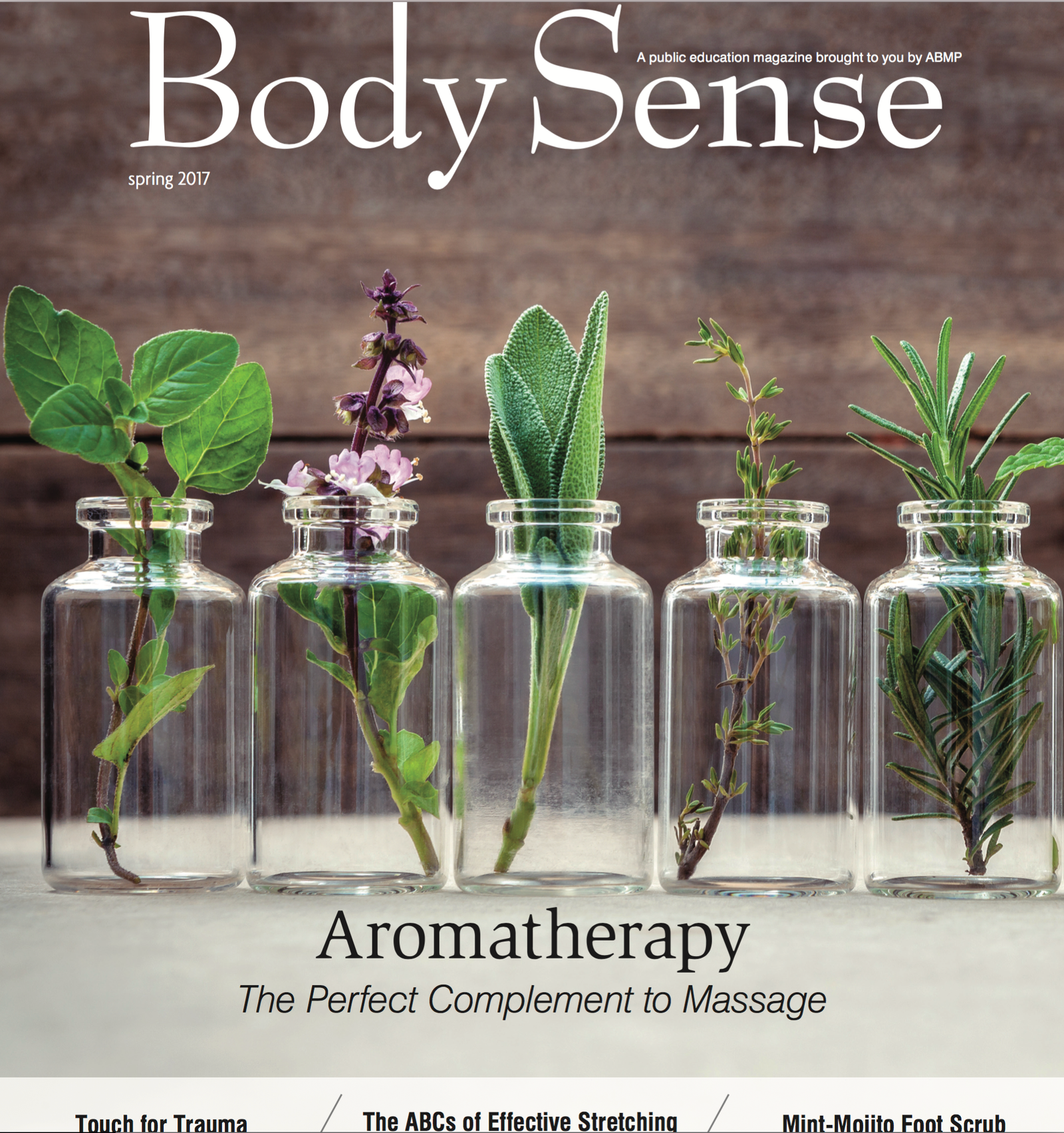
02 Apr Aromatherapy, Effective Stretching, Touch for Trauma
The ABCs of Effective Stretching
Combining Massage and Stretching Can Increase Joint Flexibility and Relax Overused Muscles
By Anita Boser
Olympic athletes, sedentary office workers, and chronic-pain patients can all enhance the effects of massage by stretching between sessions. When done as part of a health-care regimen, massage and stretching increase joint flexibility and relax overused muscles. Get the most out of stretching, and your next massage, by following these stretching ABCs.
Awareness. Stay aware of sensations when you stretch. You are more likely to pull a muscle if your awareness is somewhere other than on your body.
Breathe. Holding your breath is counterproductive. Emphasize your exhale to get a better stretch.
Connective tissue includes ligaments, tendons, and fascia. We think stretching is good for our muscles, but our connective tissues bene t just as much. The best stretches for connective tissue are fluid and elastic.
Dynamic stretching is a new way to warm up. It is based on research showing that using traditional, static stretches before exercise can actually impede athletic performance. Dynamic movements are more effective than static stretch holds in improving performance and muscle elasticity.
Ease into and out of a stretch several times before holding it. This softens the connective tissue around the muscles and gets nerves prepared to reduce muscle tightness.
Feel your sensations as you stretch. They will guide you toward the best results. Feel for the stretch point— where the amount of pull on the tissues is just enough for the muscle to let go. If the muscle tightens or is painful, you have gone beyond the stretch point. The stretch point is always less than your maximum.
Genetics. How flexible you are has more to do with genetics than how much you stretch. Some people can stretch every day and never be able to do the splits. (Take it from me!) On the other end of the spectrum, hypermobile people have to be careful not to overstretch already loose ligaments.
Hold. You only need to hold a stretch until you feel the tissues release. If you don’t feel a release within 30 seconds, back off, as you’ve probably caused sensors in the tendons to tighten the muscles.
Interoception is awareness of what is going on inside your body. While most of us ignore our innards unless there’s something terribly wrong with them,
it turns out that developing this awareness helps us self-regulate and increase pain tolerance. Stretching with awareness is one way to develop interoception.
Jaw. Tension in your jaw while you stretch is a sign that something is not right. Envision your lower jaw being heavy and your upper jaw being light.
Keep your joints in line when stretching to make sure you are getting to all parts of the muscle and connective tissue. For example, when stretching your hamstrings, if your knee turns to the side, you avoid lengthening the muscles on the side of your leg.
Lift. It’s easy—and counterproductive—to sink into a stretch. Instead, lift throughout the movement and hold phases. This engagement is particularly important to prevent injury to ligaments, especially for people who are hypermobile. (to read the complete article and this issue of Body Sense Magazine, please click here BS-spring-2017_compressed

